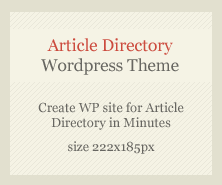In today’s digital age, attention spans are shorter than ever. When it comes to websites, users expect a lightning-fast experience. A slow-loading website can be the difference between a loyal customer and a frustrated visitor who clicks away to the competition. This is where website speed optimization comes in – a crucial aspect of Web Design that often gets overlooked.
Why Website Speed Matters
The benefits of a fast website are undeniable. Here are some key reasons why website speed should be a top priority for web designers:
- Improved User Experience (UX): Nobody enjoys waiting for a website to load. A fast website keeps users engaged, happy, and more likely to convert into paying customers. Studies show that a one-second delay in page load time can decrease conversion rates by 7% [Source: Aberdeen Group].
- Enhanced SEO Ranking: Search engines like Google prioritize websites that offer a good user experience. Website speed is a significant ranking factor, meaning a faster website is more likely to appear higher in search results.
- Increased Bounce Rate Reduction: Bounce rate refers to the percentage of visitors who leave your website after viewing only one page. A slow website leads to a higher bounce rate, as users become impatient and abandon the site before it even fully loads.
- Boosted Sales and Conversions: Faster websites lead to a more positive user experience, which ultimately translates to higher sales and conversions. Users are more likely to complete purchases or take desired actions on a website that loads quickly and efficiently.
Web Design Strategies for Speed Optimization
Web designers can play a crucial role in optimizing website performance. Here are some key strategies to consider:
- Image Optimization: Images can be a major contributor to slow loading times. Techniques like resizing images, using appropriate file formats (like JPEG or WebP), and implementing lazy loading (where images load only when scrolled into view) can significantly improve speed.
- Code Optimization: Clean, efficient code is essential for fast loading times. Web designers should strive for well-structured code that is free of unnecessary elements or bloat. Techniques like minification (reducing file size) and combining scripts can also help.
- Leveraging a Content Delivery Network (CDN): A CDN stores website content across geographically distributed servers. This ensures that users are served content from the closest server, minimizing latency and improving loading times.
- Prioritizing Mobile Optimization: With the increasing use of mobile devices, it’s crucial to ensure websites are optimized for mobile browsing. Techniques like responsive design and using lightweight code specifically for mobile devices can significantly improve the experience for mobile users.
- Minimizing HTTP Requests: Each element on a webpage (images, scripts, stylesheets) requires an HTTP request. Reducing the number of requests can improve loading speed. Techniques like combining multiple stylesheets or scripts can be helpful.
Conclusion
Website speed is no longer an afterthought – it’s a core aspect of successful web design. By prioritizing website speed optimization, web designers can create a fast, user-friendly experience that keeps visitors engaged, improves SEO ranking, and ultimately boosts conversions and sales. By working closely with developers and utilizing the strategies mentioned above, web designers can ensure their creations win the race for user attention in today’s fast-paced digital world.
